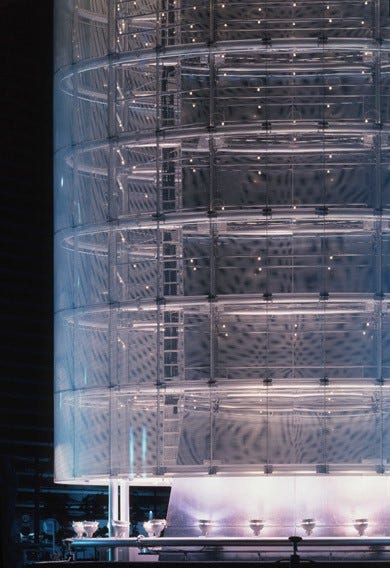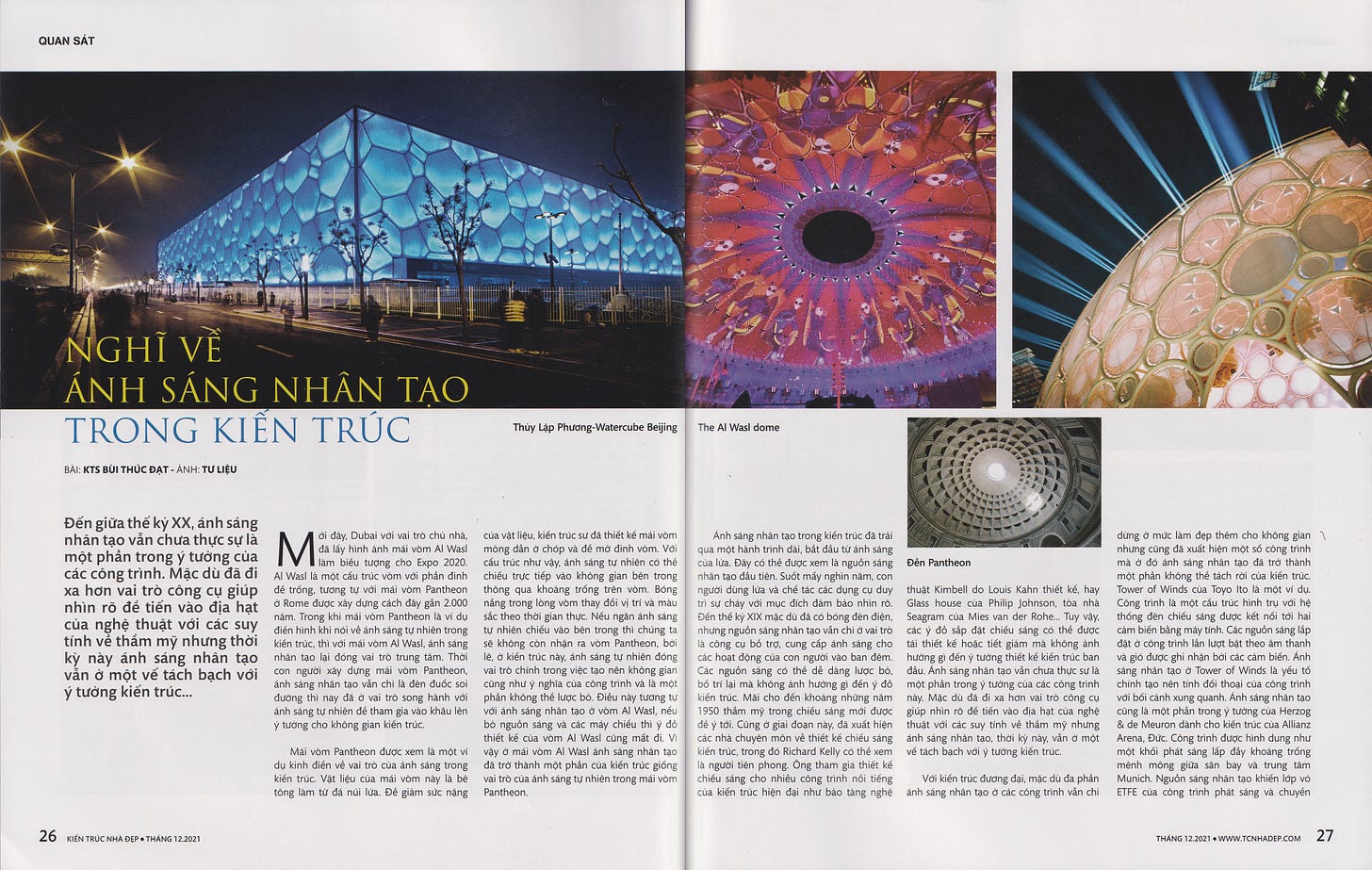Artificial lighting in architecture design
The English version of my article on Nha Dep magazine's Dec 2021 issue.

Al Wasl, the symbol of EXPO 2020 Dubai, is a domed structure with an open-top similar to the Pantheon dome built almost 2000 years ago in Rome. While the dome of the Pantheon is a prime example of the role of natural light in architecture, in the Al Wasl dome, artificial light plays a central role. When people built the Pantheon dome, artificial light was in its infancy, but now it is growing equal to natural light in creating ideas for architectural space.
The Pantheon is considered a classic example of the role of light in architecture. The material for the dome is concrete made from volcanic rock. To reduce the roof's weight, the architect designed the dome to thin out at the tip and leave the top of the dome open. With such a structure, natural light can shine directly into the interior space through the void in the dome. The shade in the dome changes position and color in real-time. Suppose we prevent natural light from entering the interior. In that case, we will no longer recognize the Pantheon because, in this temple, natural light plays a significant role in creating space and the meaning of the building. That is similar to the artificial light in the Al Wasl dome. If we remove the light source and projectors, the design intent of the Al Wasl dome is lost. Therefore, in the Al Wasl dome, artificial light has become a part of the architectural idea, similar to the role of natural light in the Pantheon dome.
Artificial light in architecture has gone through a long journey, starting with the light of a fire. It can be considered the first artificial light source. For thousands of years, people have used fire for illumination. Even with electric light bulbs in the nineteenth century, artificial light sources were still only used as an auxiliary tool, providing light at night. The light sources could be easily removed and re-arranged without affecting the architectural idea. It was not until the 1950s that people became interested in the aesthetic of lighting. There were experts in architectural lighting design at this stage, of which Richard Kelly can be considered a pioneer. He participated in lighting design for many famous works of modern architecture, such as the Kimbell art museum designed by Louis Kahn, Glasshouse by Philip Johnson, and the Seagram Building by Mies van der Rohe. However, lighting arrangements can be redesigned or reduced in these projects without affecting the original architectural design concept. Artificial light is not a significant part of these buildings. Artificial light, at this time, is still on a separate side from architectural ideas. It must and is growing beyond its role of just providing lighting and entering the realm of art with aesthetic considerations.
In contemporary architecture, although artificial light remains a decorating element in most projects, several works have appeared in which artificial light has become an integral part of the architecture. Tower of Winds by Toyo Ito is an example. The building is a cylindrical structure with a lighting system connected to two sensors by a computer. The sensors activate lights according to the sound and wind in the surrounding area. The artificial light in the Tower of Winds creates the dialogue of the building with the surrounding area. Artificial lighting was also part of Herzog & de Meuron's concept for the architecture of the Allianz Arena, Germany. The building is envisioned as a luminous mass filling the immense void between the airport and central Munich. The artificial light source causes the ETFE shell of the building to glow and change color, signaling the city's presence from the highway. The Watercube gymnasium built for the 2008 Beijing Olympics has the same material and effect. Recently, The UK pavilion at Expo 2020, designed by Es Devlin, also used artificial light to convey architectural ideas. Artificial intelligence selects the words contributed by the visitor and plays back on the main facade of the building through the LED light source. In the above examples, artificial light plays a significant role in expressing the architect's intentions. One cannot guarantee the architectural essence of these buildings if they omit artificial lighting. Perhaps the time has come for us to see artificial light as a tool to express architectural ideas, not merely as a visual aid or just a decorative element.
Artificial light is gradually becoming a new "material" in architecture. This "material" complements natural light and broadens the perspective about the role of light in architecture. It will be a powerful tool to diversify architectural ideas.



